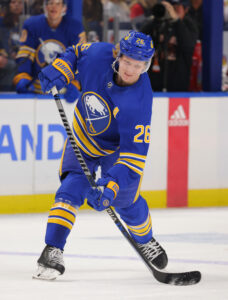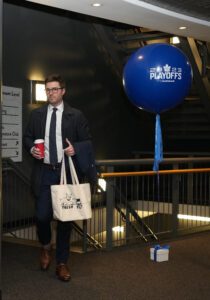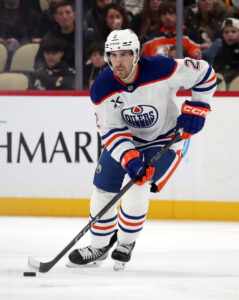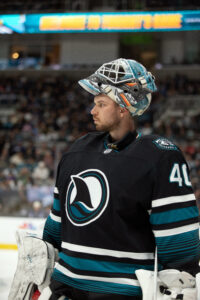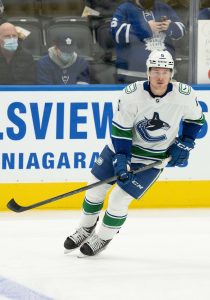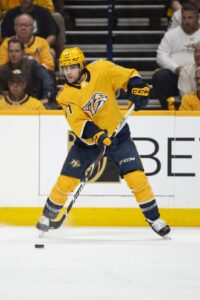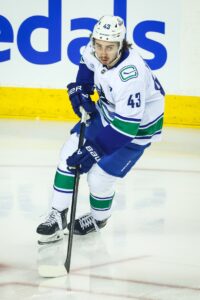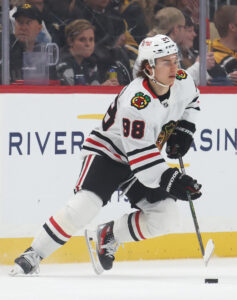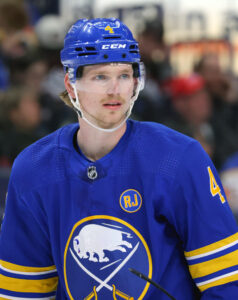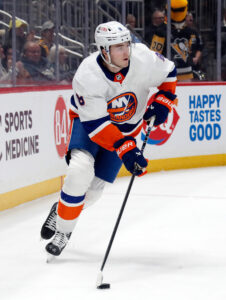The offseason has arrived for half of the league’s teams that aren’t taking part in the playoffs plus those eliminated already in the opening round. Accordingly, it’s now time to examine what they will need to accomplish over the coming months. Next up is a look at Philadelphia.
A year ago, the Flyers nearly pulled off an improbable run before falling off to finish the regular season. Unfortunately for them, that slide continued for most of the 2024-25 campaign and they finished tied for last in the Eastern Conference. While GM Daniel Briere likely knew that expectations were a bit inflated based on their finish last year, dropping back this much wasn’t what he had in mind. As a result, there’s a lot that they need to accomplish in the coming months.
Hire A New Coach
Heading into the final couple of months, the belief seemed to be that John Tortorella would last the season and then he and the team would sit down to discuss his future. However, following a sequence that saw them drop 11 of 12 games in the final few weeks of the season, Briere decided to make a decision before the year ended, firing Tortorella in late March while elevating Brad Shaw to the interim head coaching role for the final nine games.
Interestingly, the Flyers turned things around following the change, picking up 11 points under Shaw while averaging four goals per game. While nine games is a very small sample size and it’s hard to put much stock in playing out the stretch, their performance under Shaw should help the 61-year-old gain some legitimate consideration for the full-time nod. What might hurt him is that his only other head coaching experience came nearly 20 years ago when he was promoted to an interim role midseason with the Islanders.
It will be interesting to see what Briere will choose to do here. As a team that’s still rebuilding, a coach focused on development would make some sense. And in that case, keeping Shaw in the role on a short-term deal could make some sense. That would allow both sides more time to assess if he’s the coach that could run the team for the longer haul or if he’d be the one who gets them through this next phase before looking for more of a win-now coach after.
Having said that, Briere has talked about this team trying to take a step forward in the near future which could have him leaning toward a more experienced option. There’s no shortage of veteran coaches on the market now if he wants to go that route. Either way, if they have a preferred option, Briere will need to move quickly as some of these vacancies will likely be filled before too long.
Find A Goalie Upgrade
The Flyers have been trying to find a legitimate starting goalie for the better part of two generations now. The hope was that Ivan Fedotov could be their goalie of the future; they held onto that hope for a long time while they waited for him to come over from Russia. However, after posting a save percentage of just .880 this season, there’s a chance they run him through waivers in 2025-26. He’s not the long-term solution.
Aleksei Kolosov also had some potential but no desire to bide his time in the minors. He spent the bulk of the year in Philadelphia, struggled more than Fedotov did, then went back to Russia over returning to AHL Lehigh Valley. At this point, while he might have some upside, he can’t be counted on as the solution either.
Samuel Ersson has shown some flashes of being a quality goaltender but has also struggled under the weight of being the de facto number one goalie the last two seasons. It’s possible that he’s part of the longer-term solution as the second option but it would be surprising to see Briere and the Flyers think they have their future starter on their roster today.
With a stated goal to be more competitive next season, this is a position that needs to be upgraded. Unfortunately for them, that’s something that will be easier said than done this summer. The UFA market between the pipes doesn’t have a single sure-fire starter available so they can’t go that route. Meanwhile, legitimate number ones aren’t traded a whole lot although they could make sense as a possible landing spot for John Gibson if this proves to be the summer Anaheim decides to move him. That said, he’d carry some question marks as well.
At a time when there aren’t as many true legitimate number one goalies out there, finding one becomes that much harder. But at this point, even an upgrade a tier below that could be enough to give the Flyers a few more wins next season. Even with all of Ersson, Fedotov, and Kolosov signed, they need to find a way to add one more netminder to the group, one that will see big minutes next season.
Re-Sign Key RFAs
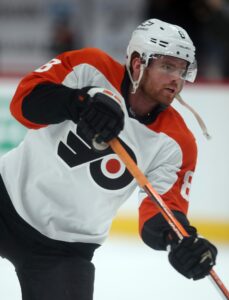 A lot has changed over the last season for Cam York. This time last year, it looked like he had taken that step forward to cement himself as a core piece on the back end. However, things didn’t go so well this season, calling that into question. The 24-year-old is seeing his bridge deal come to an end this summer and while he’s going to land considerably more than $1.6MM either way, Briere is going to need to decide if he’s seen enough to lock York up long-term or push for another short-term contract.
A lot has changed over the last season for Cam York. This time last year, it looked like he had taken that step forward to cement himself as a core piece on the back end. However, things didn’t go so well this season, calling that into question. The 24-year-old is seeing his bridge deal come to an end this summer and while he’s going to land considerably more than $1.6MM either way, Briere is going to need to decide if he’s seen enough to lock York up long-term or push for another short-term contract.
York is three years away from UFA eligibility so they could look for another bridge agreement although they run the risk of him having a breakout and needing a much more expensive contract a couple of years from now. Or worse, he decides he wants to test the open market and simply opts to take an arbitration award at the end. On the other hand, if they’re uncertain about his long-term upside, another bridge makes sense. Meanwhile, if they feel that York for sure is going to be part of the long-term core, then trying to work out a long-term agreement makes some sense although the cost of it will likely seem high relative to his performance this season.
Tyson Foerster is another RFA of note. He only has two full NHL seasons under his belt but has reached the 20-goal mark each time including a 25-goal showing this year. If the team feels the 2020 first-rounder has another level to get to, they could look to try to do a long-term agreement, not unlike the pact that former Flyer Joel Farabee received. Otherwise, a short-term bridge contract will be coming his way, likely somewhere in the $3.5MM range.
Speaking of forwards, Noah Cates also needs a new deal as his bridge agreement will end at the end of June. Notably, he’s only one year away from UFA eligibility and has arbitration rights this time around. After a rough first year on his soon-to-expire deal, he bounced back with 37 points this season. That should be enough to land him a small raise on another short-term contract as it’s unlikely Briere will be comfortable handing out a long-term agreement to someone who has run hot and cold over the last few years.
Flip The Switch
If the plan is to go from asset accumulation to starting to add pieces, the Flyers have a lot of work to do this summer to try to get back into playoff contention. On top of needing a viable starting goaltender, their back end isn’t the strongest nor is their forward group which finished in the bottom ten in scoring despite the hot finish under Shaw. It’s the fourth year in a row they’ve landed in the bottom ten in goals scored so this wasn’t a one-off either.
If they’re going to truly get back into the thick of things, they’ll need at least one top-six forward addition coupled with younger players like Matvei Michkov, Foerster, Owen Tippett, and Bobby Brink all taking steps forward offensively to move their attack closer to the middle of the pack. Defensively, with York struggling a bit last year, Jamie Drysdale being up and down, and Rasmus Ristolainen set to miss the start of next season, there’s a legitimate need for at least one top-four defender if they’re serious about being in the mix in 2025-26.
The good news is that Philadelphia is well-positioned to try to add some core elements. They have nearly $25MM in cap room per PuckPedia, an amount that can be added to if Ryan Ellis needs to be moved to LTIR. Yes, new deals for their RFAs will cut into that but there will still be enough left for one or two additions of note.
Meanwhile, the Flyers have three first-round picks at their disposal next month along with four picks in the second round. Some of those will undoubtedly be kept to add to their prospect pool but some of those selections could be dangled for win-now help, especially if they can add an experienced younger player who fits in age-wise with their current core. Adding through free agency but they have some decent trade chips to dangle over the coming weeks to try to flip the switch from being a rebuilding team to one looking to make a push.
Photo courtesy of Charles LeClaire-Imagn Images.
